Deep dive🧜♀️: Sustainability co-benefits of carbon projects

This piece introduces and explores some of the key co-benefits that arise from carbon avoidance and removal projects.
After briefly introducing what co-benefits are and the growing interest in their value, 4 key types are explored:
- 💁♀️ Gender equality
- 💵 Economic growth and job creation
- 🔥 Access to clean energy
- 🦚 Biodiversity
Each co-benefit is discussed in relation to their contribution to the sustainable development goals, the types of project commonly attributed to their production and opportunities for their effective assessment.
A case study of a project that has successfully produced the co-benefit is then explored.
This content originally featured in the deCarbonized newsletter from 12/03- 09/03/22.
1. What are co-benefits?
Co-benefits can be defined as the positive impacts arising from a carbon offset project beyond direct emissions avoidance or removal.
Due to these projects generally seeking to preserve or restore ecosystem services to absorb CO2, they interact closely with contributing to environmental, social and economic sustainability. Some specific examples are listed below:

These correspond to driving the United Nations Sustainable Development Goals (SDGs), 17 globally recognised development targets intended to be achieved by 2030.
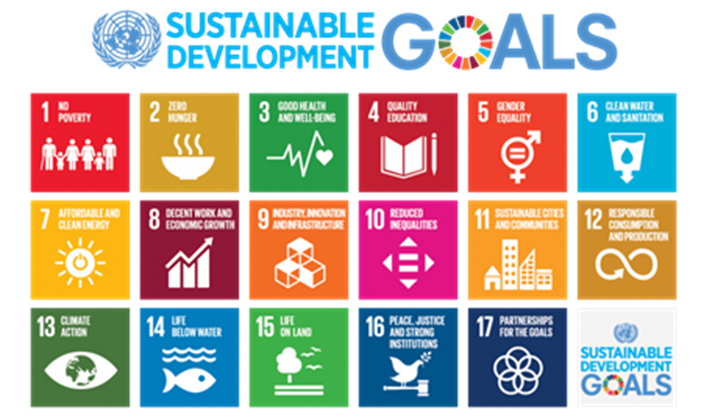
In 2014, ICROA analyzed 59 carbon credit projects to better understand their impact on driving sustainability co-benefits. Results revealed that each project produced an average of $664 of additional benefits per tonne of carbon reduction achieved.
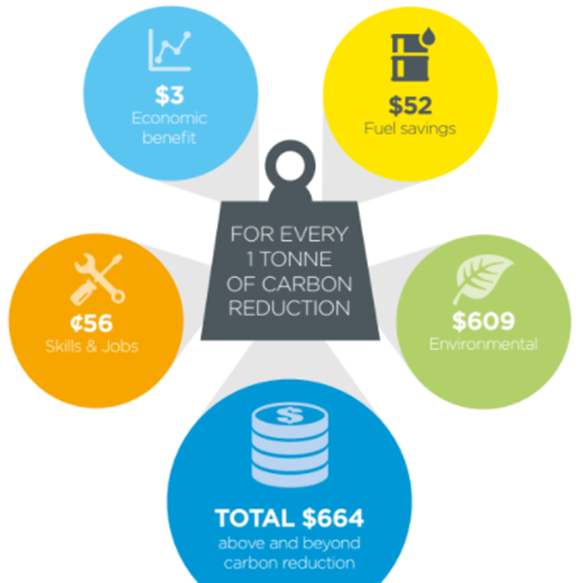
These results demonstrate the potential of voluntary carbon markets to not only mitigate climate change but play a key role in driving sustainable development in the communities where projects are based.
Growing demand for co-benefits
The value of the voluntary carbon market grew by 190% in 2021 and is expected to grow a further 50- 80% in 2022, reaching a value of some $1.7bn. This is partly driven by the net zero commitments of firms, with only 8% of companies surveyed by South Pole not having a net zero target in place.
To address these targets, many organizations are researching and paying attention to credits that not only offset their carbon footprint but demonstrate commitment to sustainability and ESG (environmental, social and governance) targets.
Indeed, a recent survey by the Forest Foundation found that 29% of respondents evaluated projects based on their co-benefits.
There is also an emerging trend towards a willingness to pay more per tonne for high quality offsets, driven by firms like Microsoft and Stripe focused on scaling durable carbon removal solutions.
While many factors affect the quality and price per tonne of carbon, the value of a credit that addresses multiple aspects of the SDGs may be perceived as higher by certain buyers, and so trade at a premium.
For example, while a small community-based project may produce lower volumes of credits that cost more to be certified, co-benefits produced may contribute to reforestation and livelihood development. This enables the credit purchaser to demonstrate a wider positive impact to customers and investors, making the project more attractive than one solely focused on large-scale carbon avoidance.

Overcoming scarcity
Due to co-benefits often not being well defined, high-quality credits that take them into account are perceived as scarce.
There are currently no unified regulations for the ‘quality’ of voluntary carbon credits, which includes classifying if a credit avoids or removes carbon, the year of actual removal (known as vintage) or the location of a project. Instead, varying methodologies are used by different certification bodies, meaning that co-benefits are measured and accounted for in different ways.
Indeed, standards have been found to differ considerably, both in how they ensure environmental and social safeguards and assess positive and negative impacts on sustainable development.
These factors prevent clear market signals reaching project developers to incorporate certain sustainability co-benefits, and doesn’t guarantee a stable, fair price for their efforts.
The Taskforce for Scaling Voluntary Carbon Markets plans to implement a set of Core Carbon Principles in 2022, which aim to scale high-quality offset supply to meet growing demand. These Principles will assess additional project attributes including co-benefits, enabling buyers to assess and access higher quality projects.
Other private initiatives like the Voluntary Carbon Markets Integrity Initiative also seek to support access to high-quality carbon credits and increase market integrity for co-benefits.
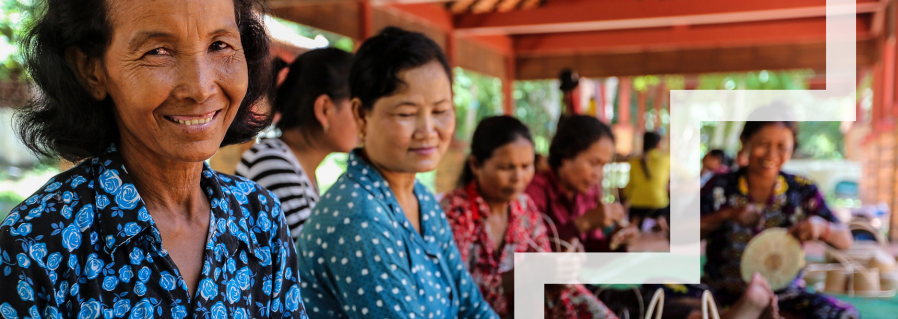
2. Gender equality
Carbon credit projects have the potential to deliver the social sustainability co-benefit of improved gender equality.
This relates to tackling Sustainable Development Goal (SDG) 5, which seeks to reduce the inequalities faced by women by:
- Improving women’s participation in decision making
- Reducing the strain of unpaid domestic burdens on women
- Reducing levels of domestic violence and child marriage
Empowering women in these ways also accelerates progress towards other SDGs, by increasing family health and the amount of women engaged in education for example.
Impact of carbon projects
Carbon credit projects can positively impact gender equality in multiple ways:
- 🍛 Clean cookstove projects reduce the amount of time women spend collecting biomass for cooking. This creates opportunities to pursue other activities, such as the generation of new income streams. Cookstove projects also mitigate the negative impacts of inhaling combustion fumes indoors, improving women’s health and working conditions. Cookstove projects however have also faced criticism for reinforcing traditional gender stereotypes, instead of challenging a woman’s role within the family and wider community.
- 🧼 Water access projects reduce the time required by women to collect water and the biomass required to boil it to make it safe to drink. Similar to cookstove projects, this benefits women by freeing up valuable time and reduces exposure to harmful fumes.
- 🦎 Ecosystem restoration projects can create land management roles and educational opportunities for women. Often, as more marginalized community members than their male counterparts, female landowners more acutely feel negative climate change impacts on crop quality. Involvement in these projects can therefore help compensate for income losses.

Measuring and monitoring equality benefits
Definitively measuring changes to gender equality is difficult, as impacts pervade the lives individual women very differently.
To ensure that women are empowered as much as possible, gender equality perspectives should be streamlined throughout carbon credit project development. This includes involvement in initial financing, the removal of barriers to participation and explicit inclusion requirements in a project’s design.
Several of the top registries have developed frameworks and standards to encourage greater incorporation of gender-based co-benefits.
Verra partnered with WOCAN in 2017 to develop the W+ standard, which links co-benefits of women’s empowerment with carbon projects. There are currently five W+ registered crediting projects, including a cookstove project in Cambodia. W+ can be integrated by developers by applying this blueprint to project design.
Greater visibility for the W+ standard is being achieved viathe development of a recent whitepaper and WOCAN membership of the Integrity Council for the Voluntary Carbon Market.
The Gold Standard launched its Gender Equality Requirements in January 2018. The requirements anchor equality at the core of design and assess the impact of projects proactively closing gender gaps. These are additional to the Gold Standard’s general gender sensitive requirements, applied to every project that they certify.
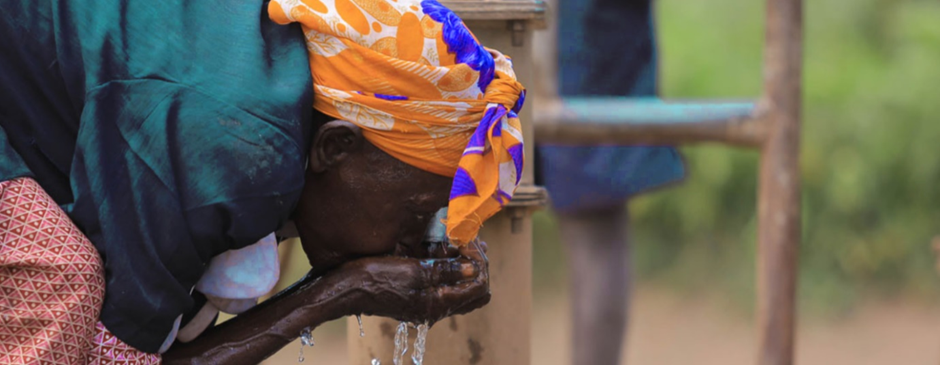
Successful impact: Lango Safe Water Project, Uganda
CO2balance was the first project developer to apply the Gold Standard’s full Gender Equality requirements to the Lango Safe Water Project in northern Uganda.
The women of Lango spend up to 2 hours a day trekking to rivers, filling buckets of water and gathering wood to boil away impurities, in order to provide water for their families.
While drilling boreholes to access underground water could alleviate this pressure, the money, skills and materials available to achieve this often remain scarce. In 2019, the Gold Standard sought to develop a novel solution that would use carbon finance to pay for borehole development.
By building boreholes across the region, women are no longer required to boil water. This means that they are no longer required to chop down trees, leading to less carbon dioxide entering the atmosphere, justifying borehole development as a carbon offset project.
So far approximately 100,000 tonnes of CO2 emissions have been avoided a year, alongside multiple gender equality impacts:
- 2 hours a day saved by women on water collection
- Water Resource Committee membership approaching gender parity, with 46% female to 54% male members
- 0% of participating women reported incidents of domestic violence related to water collection since the project started, compared to 35% before
- Borehole users reported an 85% reduction in incidents of bullying, intimidation and assault during water collection
- More than 40,000 individuals have gained access to safe water, reducing exposure to waterborne illness
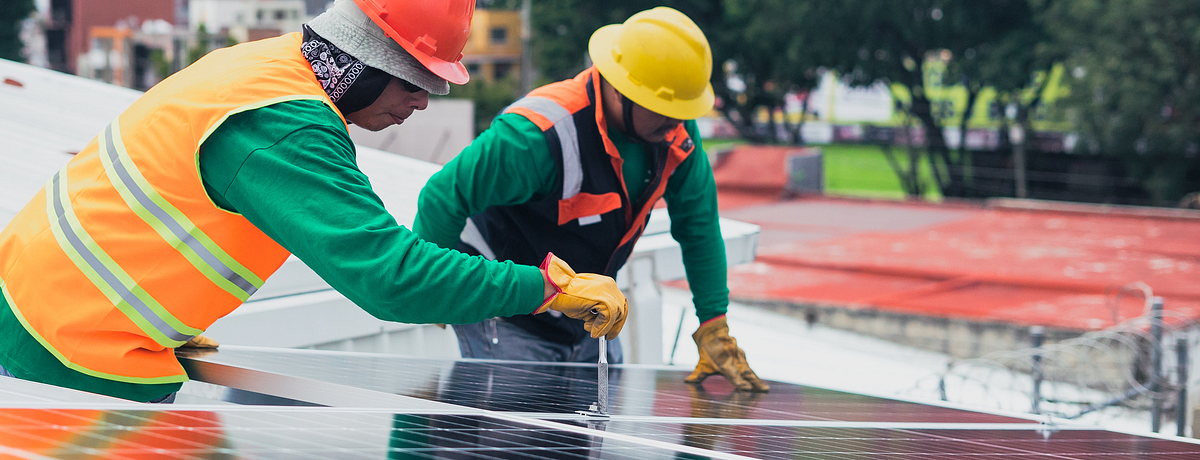
3. Economic growth and job creation
Another key co-benefit of carbon credit projects is the strengthening and diversification of local economic opportunities.
This contributes to achieving Sustainable Development Goal (SDG) 8, which seeks to “Promote sustained, inclusive and sustainable economic growth, full and productive employment and decent work for all”. This includes:
- Encouraging economic growth to create quality, secure, full-time employment opportunities
- Providing better safety nets for the 61% of the population engaged in the informal economy
- Deploying new technologies and innovative approaches to creating high value industry growth
- Increasing youth employment and training
Achieving these aims accelerates progress towards multiple other SDGs, including reducing levels of poverty and driving the development of new industries and infrastructure.
Impact of carbon projects
Economic growth results from multiple different types of offset project, with some key examples are discussed below.
- 🌞 Renewable energy projects create opportunities for both skilled and unskilled employment in the construction and maintenance of renewables equipment, like wind turbines. Projects can also lead to benefits of technology transfer and development of associated opportunities, such as university research or component manufacture. Finally, if the electricity generated improves a community’s energy access then an even broader local opportunities can be created.
It should also be noted however, that large-scale renewables projects may also result in negative impacts, such as inequality of job distribution or negatively effecting the ecosystems where the project is constructed. - 🌳 Forestry projects can lead to multiple different employment opportunities, including protecting reforested areas, managing agroforestry farms and engaging in new opportunities like beekeeping or harvesting fruits or rubber.
These roles can strengthen and diversify a local community’s finances, leading to a stable, growing economy that in turn encourages infrastructure development and education opportunities. - 🌱 Ecosystem restoration, similar to forestry projects, can create jobs relating to the protection of certain habitats and those arising from their increased health, such as new or improved fishing opportunities. Ecotourism opportunities may also emerge, creating roles in hospitality or as guides or craft producers.
These emerging opportunities should be considered within the restrictions that a restoration project may place on land and resource access, as not to negatively impact economic opportunities.

Measuring and monitoring benefits
As employment is a broad ranging co-benefit that arises from many carbon credit projects, there are no specific standards related to their inclusion.
Indeed, analysis of 80% of the Gold Standard’s portfolio revealed that collectively, projects produced an additional $20 million in employment co-benefits. The most significant project type was reforestation, which produced $27 of co-benefits per tonne of carbon, versus $2 for wind.
It is important to recognise that for employment benefits to provide ongoing value they need to meet certain criteria:
- Jobs need to be stable, long term and of high quality, meaning that offset projects need to be robust over many years.
- New jobs should outweigh any loss of employment from an industry that a project may displace, for example by creating a protected area that prevents logging activities.
- Opportunities need to be spread as equally as possible across communities to prevent the concentration of wealth, power and access to resources amongst an elite group.
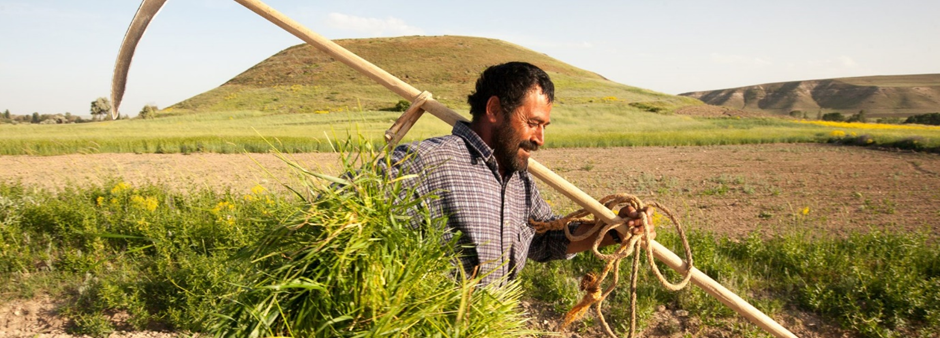
Successful impact: Sayalar District Wind Project, Turkey
The Sayalar District in western Turkey has traditionally been an agricultural centre. However, as renewables projects have emerged across Turkey in response to fossil fuel reliance and growing energy demand, the region now hosts several wind power projects.
The Sayalar wind farm aims to create local employment and contribute to local economies through procurement. With support from the Gold Standard, the project now consists of 48 wind turbines that generate over 170,050 mega-watt hours of electricity per year.
The project has provided access to new and better quality jobs, which have been made available to local communities as a priority. Over its lifetime, it is predicted the project will require 57 construction and 14 operational staff, with training opportunities in additional roles such as security.
The Gold Standard calculate that the value in wages created through these employment opportunities is $200,000 a year, which equates to a $2.30 of co-benefit for each tonne of carbon avoided.
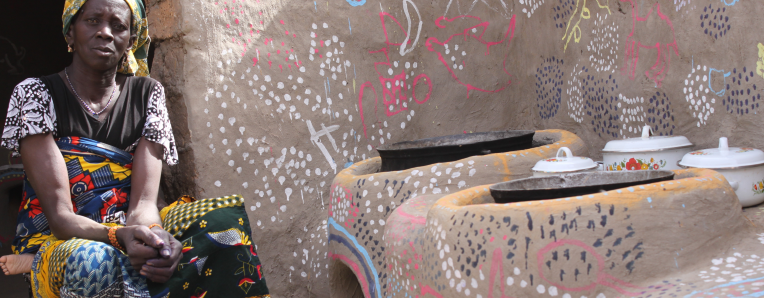
4. Access to clean energy
Another sustainability co-benefit that arises from carbon credit projects is increased community access to clean energy.
This directly contributes to achieving Sustainable Development Goal (SDG) 7, which seeks to “ensure access to affordable, reliable, sustainable and modern energy for all” by:
- Providing universal access to safer, more efficient cooking systems for 2.6 billion people
- Supplying electricity to the 759 million people that currently do not have access to power
- Increasing the amount of modern renewable energy infrastructure
Delivering increased energy accesses positively contributes towards the achievement of multiple other SDGs, by improving health, reducing poverty and creating new livelihood opportunities.
Impact of carbon credit projects
Energy-related carbon credits are generally associated with large scale renewables projects. Indeed, these are the most common offset project type behind REDD+ (discussed further below).
Large renewables projects however are less focused on community-level co-benefits, seeking instead to remove large quantities of fossil fuels from a national electricity grid, as opposed to improving local access to clean energy.
Conversely, household energy technology projects focus on community-scale emissions reductions. These are created via the uptake of technologies that either increase energy efficiency or use renewable energy at the household level.
There are 2 common project types:
- 🔥 Improved cookstoves increase the efficiency of household cooking. On average, households using traditional cooking methods consume 5–12kg of wood a day, which is time consuming to collect and places pressure on surrounding forests. The combustion process then exposes users to toxic smoke who are generally women (as explored above). Overall, the process of deforestation and combustion driven by these methods releases 1 giga-tonne of CO2 a year- 2% of all global emissions.
Cleaner cookstoves provide a powerful solution, using 50–60% less wood than traditional approaches. Stoves are often made from ceramic or metal, meaning that they are more durable, sustainable and create opportunities for local manufacture. - 💩 Biogas is produced by placing animal manure and other wastes into a domestic biodigester. The biodigester causes the natural process of decomposition to take place in an air free environment, producing methane rich gas. This can then be used to power various appliances, including lamps, refrigerators and engines, instead of being released directly into the atmosphere.
Similar to the benefits of improved cookstoves, biogas use reduces reliance on surrounding biomass resources, reduces the time required to collect resources and improves air quality. The process additionally improves sanitation and waste management in local communities and produces the bi-product of a high quality fertilizer.
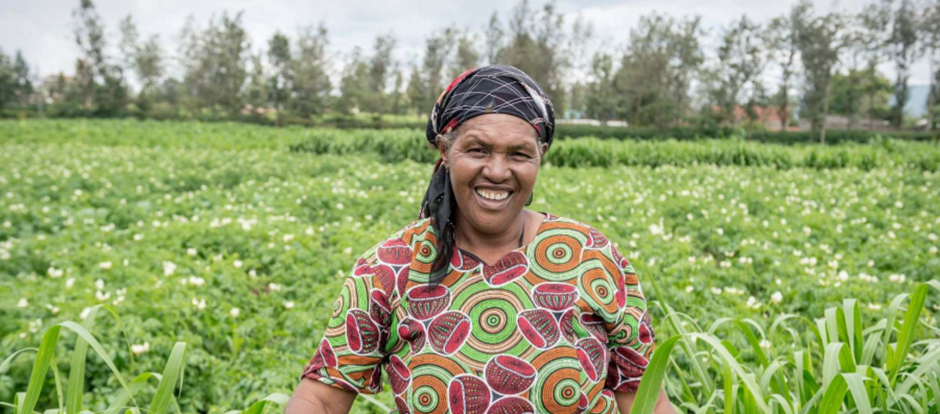
Measuring and monitoring benefits
While improved household energy solutions are essential to achieving SDG7, their uptake has been slow. There remains a fraction of the investment required to develop and roll-out these technologies, meaning that carbon credit projects play a large role in accelerating their progress.
The multiple co-benefits that household energy projects generate is evident. The Gold Standard supports improved cookstove and biogas projects via its community-based energy efficiency market place. A 2014, a review of all 47 related projects (34 cookstove and 14 biogas) revealed that the following additional co-benefits had been generated annually:
- Cookstoves — $84 million saved via improved community health; $143 million saved from reduced fuel use; $4 million generated in employment opportunities around the manufacture and distribution of cookstoves.
- Biogas — $25 million saved via improved community health; $6 million saved from reduced fuel use; $4 million generated in employment opportunities around building and installing biodigesters
Indeed, one of Gold Standard’s long running biogas projects- by March 2020- had saved 365,200 tonnes of CO2, preserved 223,000 tonnes of wood and involved 103,440 local beneficiaries.
Under Verra’s Sustainable Development Verified Impact Standards (SD VISta) there is a methodology currently under development specifically focused on the time savings generated by cookstove projects. This includes time spent collecting fuel and spent cooking, with a specific focus on improving the workload and health of women and girls.

Successful impact: Hifadhi-Livelihoods Cookstove Project, Kenya
The Hifadhi-Livelihoods project is developed and financed by the Livelihoods Fund, in partnership with EcoAct & Climate Pal.
Rural households in Kenya are often dependent on local biomass from forests for energy. Kenya’s forests are particularly vulnerable to deforestation due to a low percentage of forest cover, resulting in huge biodiversity loss as pressure grows year-on-year.
The Hifadhi-Livelihoods project provides households in the Mount Kenya region with affordable, clean and efficient cookstoves that reduce the consumption of firewood and emit less smoke, driving positive social and environmental impacts.
Since the project’s inception, it has saved 174,000 tonnes of CO2 annually and had the following impacts:
- Reduced wood consumption by 40%
- Halved the time spent on daily wood collection
- Distributed 60,000 locally manufactured cookstoves
- Trained and provided jobs for 30 local artisans
- 100% of beneficiaries state that they now have better indoor air quality

5. Biodiversity
The final co-benefit explored in this article is biodiversity.
There is increasing recognition that protecting biodiversity goes hand-in-hand with tackling climate change, each driving and amplifying the other. Incorporating biodiversity and climate change agendas is therefore crucial for meeting the aims of the Paris Agreement and effectively tackling biodiversity loss.
Improved biodiversity alsodirectly contributes to achieving Sustainable Development Goal (SDG) 15 focused on protecting life on land, which includes the following aims:
- Halting biodiversity loss and preventing the extinction of threatened species
- Integrating ecosystem and biodiversity values into national policy making
These are directly correlated with aims relating to:
- Ensuring the conservation, restoration and sustainable use of forests, wetlands, mountains and drylands
- Implementing the sustainable management of all forests, stopping deforestation and increasing reforestation globally
Improved biodiversity and associated ecosystem services in turn support a range of other economic and social SDGs, including access to a sustainable diet, clean water and sanitation and stable livelihood opportunities.
Role of carbon credit projects
Forest and land-use focused credits are one of the most popular of all carbon credit types, consistently commanding higher prices per tonne. In 2020, 47 mega tonnes of CO2 were offset via forestry projects at a high-price mark of $5.59 a tonne, compared to $2.20 for renewables.
To date, forest and land-use credits have primarily been generated via the protection of existing forests to avoid carbon emissions. Interest in afforestation, wetland restoration and approaches that actively remove carbon however, is now increasing.
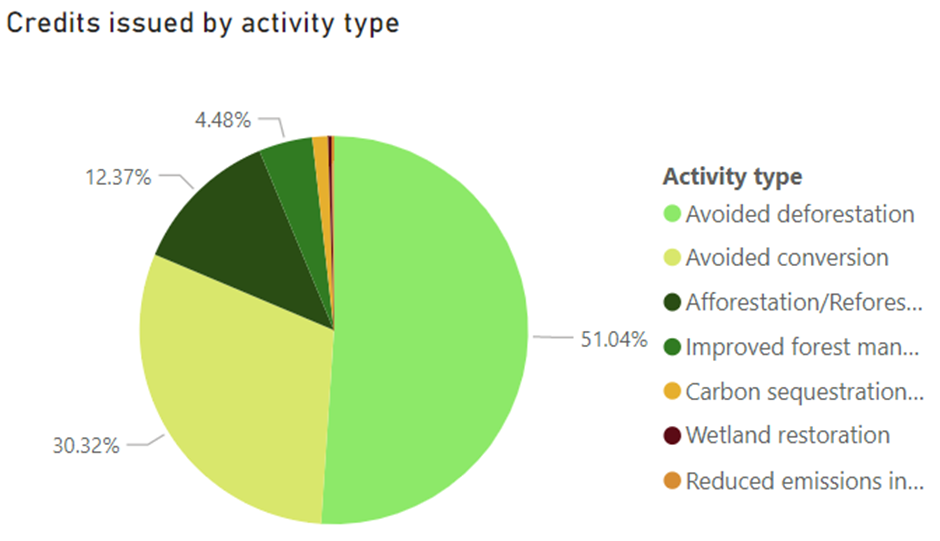
Forestry projects generate biodiversity co-benefits by:
- Maintaining ecological balance in pollination, seed dispersal and germination
- Protecting plant regeneration and water quality
- Preserving the habitats of animals and insects, including those facing extinction
The most common forest project type is REDD+ (Reducing Emissions from Deforestation and forest Degradation). REDD+ was developed by the UN to provide financial compensation to communities in developing countries for conserving and restoring forests.
Agricultural expansion has been linked to the loss of 150 million hectares of tropical forest since the 1990s. While converting forests to palm oil plantations for example, proves economically lucrative, around 19% of suitable land coincides with regions of high biodiversity. This places great pressure on these forested areas across Asia, Africa and South America.
If REDD+ were to achieve its economic potential, payments generated could make forest conservation financially competitive with palm oil cultivation, alongside presenting the biodiversity benefits identified above.

Measuring and monitoring benefits
REDD+ projects, while common, have come under scrutiny for their carbon avoidance and biodiversity co-benefit credentials. Issues include:
- A lack of transparency and community engagement, leading to accusations of land grabbing from communities that aren’t engaged in project benefits.
- Carbon avoidance does not always lead to biodiversity protection. Often, projects don’t correspond with biodiversity hotspots or will prioritize carbon conservation over the protection of a diverse ecosystem.
- Low resolution monitoring and remote sensing data is unable to tell the full story at a local level. For example, negative impacts like overhunting in recovering forests is unlikely to be detected.
Concerns over the true benefits of REDD+ projects have led some to distrust their ability to effectively avoid carbon emissions. Indeed, Gold Standard do not allow the inclusion of REDD+ credits in their registry due to integrity concerns. Verra however do include REDD+ projects and continue to push back against negative claims made in the media. New requirements for REDD+ baselines however, could affect their inclusion by Verra in the future.
Beyond REDD+, Verra are developing methodologies that place biodiversity at the heart of forest conservation projects. They have developed the Climate, Community & Biodiversity (CCB) Standards, which identify projects that address climate change, support local communities and conserve biodiversity. Almost 200 projects have been validated to the CCB Standards, encompassing more than 10 million hectares of land.
The Gold Standard’s ‘land use activities and nature based solutions’ credits more directly link co-benefits like biodiversity, agroforestry development and forest regeneration with forest protection. This ensures that all carbon credit projects offer high biodiversity credibility.

Successful impact: Rimba Raya Sanctuary, Indonesia
The Rimba Raya Biodiversity Reserve Project aims to preserve 64,000 hectares of tropical peat-swamp forest on the south coast of Borneo, Indonesia. The area is rich in biodiversity, including being home to the endangered Bornean orangutan. Despite this, there were plans for it to be converted into four palm oil estates.
Developed and maintained by InfiniteEARTH, the Reserve avoids the destruction of forests that hold over 130 million tonnes of carbon. It also boarders the world-renowned Tanjung Puting National Park, creating a 90km buffer zone that helps protect the Park’s integrity.
Rimba Raya has become the first project to register for Verra’s Sustainable Development Verified Impact Standard (SD VISta). Its livelihood programmes in surrounding villages advance all 17 Sustainable Development Goals by providing education, employment, increasing the standard of living and promoting gender equality- quite a triumph!
Thank you for reading 🙏 Please comment, share and subscribe to the deCarbonized newsletter for weekly chunks of our latest deep dive!

